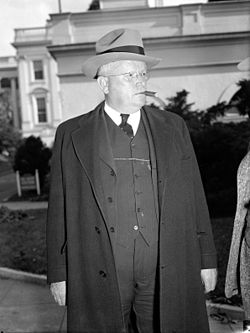15th Oklahoma Legislature | |
|---|---|
 | |
| Leadership | |
Claud Briggs (D) | |
Composition: | |
The Fifteenth Oklahoma Legislature was a meeting of the legislative branch of the government of Oklahoma, composed of the Oklahoma Senate and the Oklahoma House of Representatives. The state legislature met from January 8 to April 30, 1935, during the term of Governor E.W. Marland. [1] Marland influenced the selection of Leon C. Phillips for Speaker of the Oklahoma House of Representatives. Phillips had been an opponent of Governor William H. Murray's proposals. [1] Phillips also opposed many of Marland's proposals. [1]
